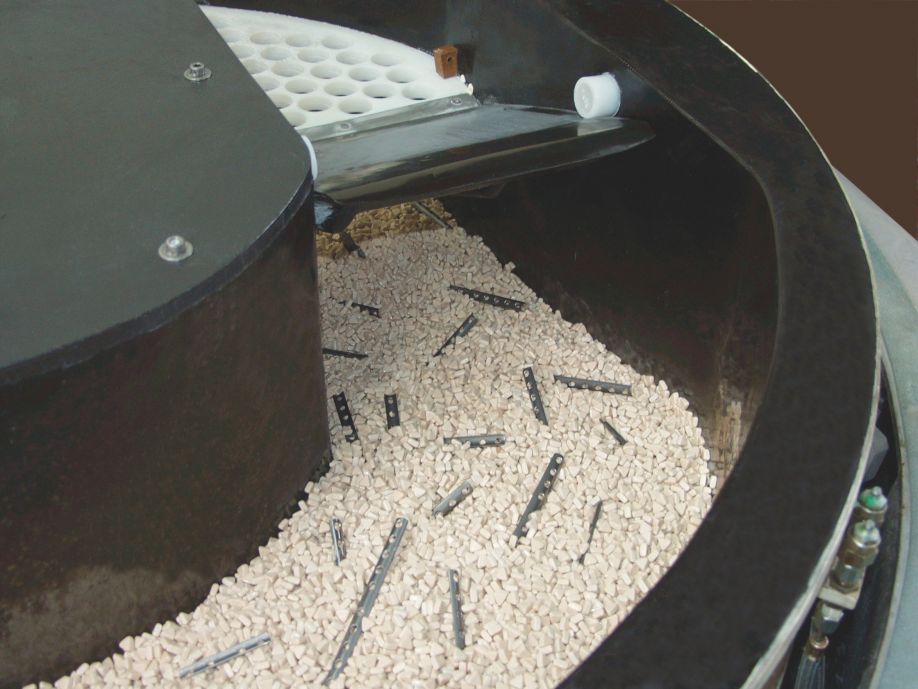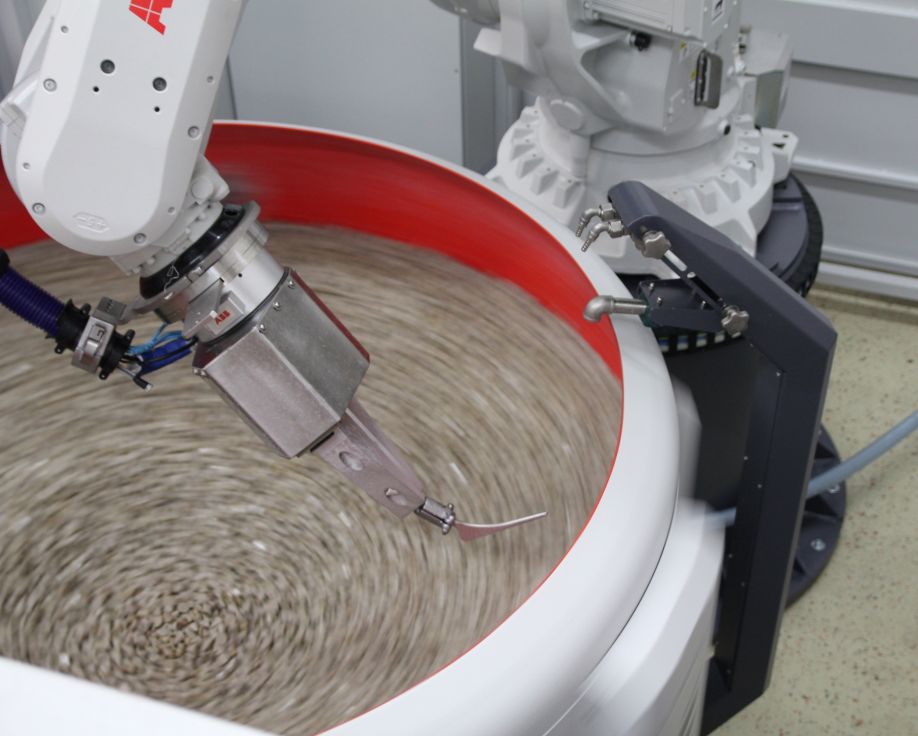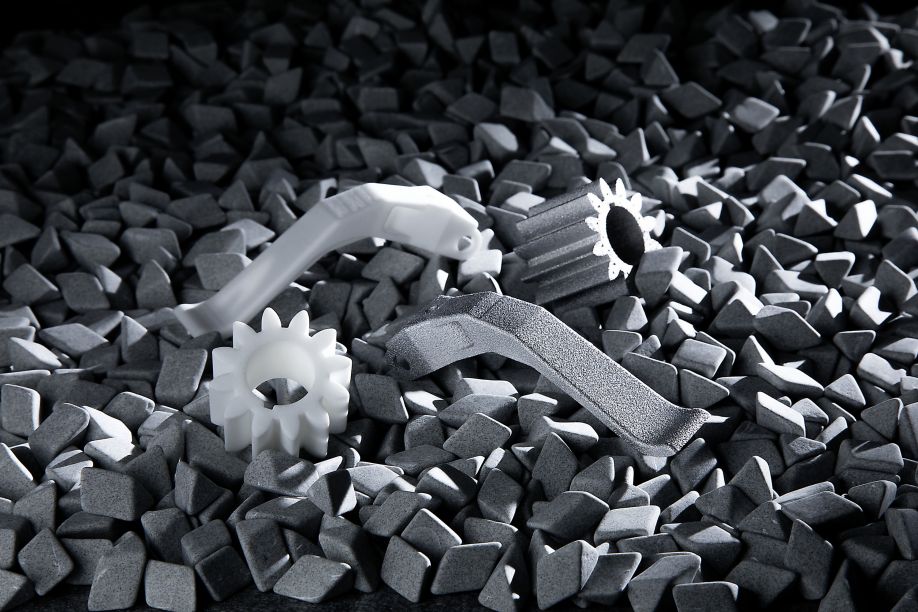Mass finishing is wrongly regarded by many as a relatively crude technology. However, it needs to be understood that it has been an established surface finishing technique for many decades for a reason.
The Case for Mass Finishing for AM Parts and Components
Daniel Tweer, Managing Director, Rösler UK | AM Solutions
Post processing is a hot topic in the area of additive manufacturing (AM), which is unsurprising as in many applications, the post-processing step(s) can account for upwards of 50% of the total unit cost for an AM part. So the drive is on to reduce the time and cost of the post-processing step in product development, while simultaneously keeping an eagle eye on the unswerving need for precision and repeatability in production.
This has led to the emergence of new innovations for AM post-processing, many coming from relatively inexperienced start-up companies, and many being disproportionately expensive and over-engineered. In this article, I will bang the drum for tried and tested technologies such as mass finishing that when applied to AM parts can cost-effectively fulfil all the requirements in terms of the nature and precision of AM parts.
Mass finishing is wrongly regarded by many as a relatively crude technology. However, it needs to be understood that it has been an established surface finishing technique for many decades for a reason, and delivers a whole range of surface finish characteristics from basic to exacting depending on end-use application. In some instances it can be used to create extremely precise surface finish on safety critical applications such as those found in the medical and aerospace sectors. The key is that mass finishing can be adapted to suit surface finish requirements, and is always the most cost-effective technology available.
Companies producing end-use products via AM need to realise that they are just like companies using traditional manufacturing processes. The goals are the same, namely to make end-use products that conform to design intent and are fit for purpose repeatably and cost-effectively. If the end use product produced does not need a sophisticated surface finish, then there is no point in paying a premium price for a technological post-processing solution that attains levels of surface finish that are unnecessary. If on the other hand exacting surface finish is required, then there is a compelling argument to use a technology such as mass finishing that has stood the test of time, and which can contribute considerably to the reduction in the cost per part when using AM.
 ​
​
Parts being post-processed in a rotary vibrator. Rotary vibrators allow for practical and easy treatment of work pieces in different shape, sizes, and quantities. This mass finishing technology can be utilised for metal or plastic AM parts (filled or unfilled), and the work piece spectrum ranges from delicate parts to larger more rugged components.

A metal part being post-processed in a surf-finishing mass finishing machine. Surf-finishing is an intense mass finishing technology especially well suited to high-value components with complex shapes that can be easily clamped. Surf finishing is well suited for metal AM applications in the medical device and aerospace sectors for precise and rapid finishing processes and procedures.

Plastic and metal AM parts in mass finishing media. Mass finishing is arguably the most flexible surface treatment process. It is known to be uncomplicated, flexible, transparent, always repeatable and above all cost-effective.
GOOD ENOUGH?
Mass finishing is arguably the most flexible surface treatment process. It is known to be uncomplicated, flexible, transparent, always repeatable and above all cost-effective.
For many decades, mass finishing has been used for the surface treatment of a huge array of products and components across countless industry sectors due to its enormous adaptability.
In the mass finishing process, workpieces embedded in the grinding/polishing media mass are set in a relative motion to each other by either through vibration, centrifugal force, rotation, or drag force. These different forces combined with a vast array of mass finishing media make the process infinitely customizable to a range of end-use products in a variety of geometries and materials.
AM produced parts present a whole set of unique challenges when looking at mass finishing. The unmachined surface of AM parts are much rougher than parts produced using legacy technologies. In addition, one huge advantage of AM as a production tool — namely its ability to manufacture highly complex geometries — can make smoothing and polishing extremely difficult. Add into the mix unique AM challenges such as unpacking, removal of loose or sintered powder residues, and removal of supports, and the requirement for bespoke solutions is obvious.
With the focus today being on the use of AM for production, the scrutiny on such issues as dimensional tolerance attainment, verifiable build quality and conformance to design intent, and surface features and finish becomes more and more intense. When used as a prototyping technology, absolute adherence to tolerances and precise design intent is not always necessary, and a “good enough” approach can be taken. Hence the proliferation of quite inexpensive desktop 3D printing machines that provide sufficiently accurate rapid prototypes that do the job without needing to be pitch perfect.
For production applications, however, “good enough” is no longer sufficient. If an AM part is integral to a safety critical aerospace or medical application as previously mentioned, it is essential to achieve surface finish requirements consistent with design intent. It is here that the role of post processing is so important, and it is also an area where mass finishing technology providers like AM Solutions can make a significant difference. And the starting point for making this difference is an understanding of the fact that while AM parts immediately “off build” do have unique characteristics, they are just parts, and like parts built using traditional manufacturing processes they need to be finished, and they need to be finished accurately, speedily, and cost-effectively. Through a judicious combination of different machine technologies and different media, mass finishing can achieve these goals.
MASS FINISHING AND AM
In a traditional manufacturing scenario, the prospect of post-processing steps being responsible for more than 50% of part costs would be untenable and certainly unsustainable. So what is being done about this anomalous and potentially prohibitive barrier to the viability of AM as a production technology?
Well, there is effectively a pincer movement at work. On the one side, AM technology platform developers are constantly refining processes to reduce the surface roughness of AM produced parts, and on the other side, companies such as AM Solutions (a division of Rösler which has an eight-decade history in industrial finishing) are applying their decades of experience in producing mass finishing solutions to cater for AM parts. The emphasis is on the use of the optimal mass finishing machine technology with the optimal mass finishing consumables for different AM applications, and providing mass finishing solutions that are customized to each AM application. AM Solutions is in a unique position to do this as it is one of the only mass finishing solutions providers that is truly vertically integrated, making its machines in-house and also developing, innovating, and creating a vast portfolio of consumables. Researching and optimizing the media used for AM parts is absolutely key to success.
This pincer movement will effectively erode the cost and time that is required to post-process AM produced parts, and by so doing will facilitate the production of AM parts with surface characteristics and smoothness that rival those produced on legacy metal and plastic manufacturing processes at similar cost. In other words, the objective is to allow the manufacture of near net shape parts with superior surface characteristics without compromising part integrity. When this is achieved, the viability of AM as a production alternative will be recognised by a growing number of companies, and the technology will be in a better position to disrupt the traditional production paradigm. AM Solutions positions itself as a company working in the AM ecosystem which has this objective as its primary focus.
DESIGN AND BUILD FOR POST PROCESSING
Various parameters can affect the efficiency of a post-processing operation for AM produced parts, all of which play to the fact that post-processing operations should be considered early in the design stage, and certainly before an AM part is built. For example, the orientation of build layers (i.e. deviation from horizontal) can be a decisive parameter in some applications, as can the chosen mass finishing media which will react differently depending upon the AM build process used. Also, the rate of material removal in some high energy stream mass finishing processes require parts to be designed to mitigate material loss in critical part locations. So DfAMPP (Design for AM Post-Processing) is a real thing!
This all plays to the fact that engagement with a qualified and experienced post-processing expert company early in the design stage of product development is vital, as off-the-shelf, often inappropriate legacy technologies will not achieve the desired results when using AM for production, and some newer post-processing technologies are either too cumbersome, difficult to use, and over-engineered to make them a long term cost-effective solution for industrial applications.
QUESTIONS FOR SUPPLIERS
When you are short-listing your preferred AM post-processing technology provider, there are a number of questions that you must ask.
Key among these when looking at mass finishing technologies is to assess whether the processes are simply legacy processes that have now been applied to AM, or whether the processes have been intelligently adapted to the vagaries of AM parts. As mentioned previously, mass finishing can be the most flexible, uncomplicated, transparent, repeatable and cost-effective surface treatment process, but only if the correct combination of machine technology and mass finishing consumables are used for AM parts. You should ask whether your short-listed supplier makes its own machines in house, is truly vertical integrated, and researches, innovates, and produces its own media. Only when a supplier has a proper grip on the effect that machine technology and media can have together will an optimal mass finishing process be achieved.
Second, you need to question the level of experience that your chosen technology supplier has. The post-processing environment is crowded with new post-processing technologies designed for AM, but often the companies behind these innovations are start-ups and therefore lack the experience and also often the financial robustness to be a reliable product development partner. Also, choosing a supplier that has options for a range of materials (plastics, photopolymers, and metals) obviously has significant strategic importance if AM is being used throughout the supply chain.
When it comes to mass finishing, if suitably adapted to AM parts, it remains both the most efficient and cost-effective post-processing method. There is a reason that mass finishing is more often than not the go-to post-processing technology used in conventional manufacturing, as it is cost-effective and shortens the actual part processing time. Adapting mass finishing to AM parts affords the AM sector the same advantages, which is vital to reduce price per part by rationalising the post-processing cost.
About AM Solutions
Daniel Tweer is the Managing Director of Rösler UK. AM Solutions is part of the Rösler Group, which has been a leading expert in the field of surface finishing for more than 80 years, and offers the most extensive portfolio of mass finishing systems, shot blasting, consumables, and services in the world. Renowned companies from a wide range of industrial sectors trust in Rösler products and services. AM Solutions was created from this rich heritage to apply the knowledge and expertise gleaned from 8 decades working in traditional manufacturing processes to the emerging and disruptive area of additive manufacturing. AM Solutions’ specialist team is able to design an AM post processing system that is perfectly suited to specific applications.
The content & opinions in this article are the author’s and do not necessarily represent the views of ManufacturingTomorrow
Featured Product

